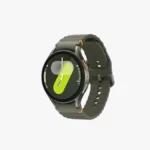A turning point for 3D printing in healthcare is quickly coming. Technology has improved medical technology by creating organ simulators, bone and joint replacements, and precise equipment. The technique to produce skin tissue, drugs, and organs is also being researched. Medical specialties such as pediatrics, orthopedics, radiology, and oncology, cardiothoracic and vascular surgery are influenced by 3D printing technology.
Additionally expanding is the number of hospitals having internal 3D printing capabilities. According to an analysis, in 2019, 113 hospitals had a centralized 3D infrastructure for point-of-care production, up from just three in 2010. Hundreds of 3D-printed medical goods have been approved by the FDA. Although during the COVID-19 pandemic, when certain hospitals depended on technology for quick deployment of personal protective gear, the market for 3D printing for healthcare grew significantly.
More healthcare systems are investigating 3d printing for medicine more closely due to these advancements and the fact that producers of medical devices are using it more frequently to reduce expenses and more reliably satisfy demand. Here are a few of the greatest advantages medical institutions have: utilizing current technology and how 3D printing may change clinical patient care in the future, even though questionnaires remain concerning how widespread 3D printing will be in the healthcare industry, compensation policies for these products offerings, and more.
The Effects of 3d Printing in Printing Healthcare
A three-dimensional solid product is produced via 3D printing from a digital model. By scanning a digital plan and replicating it level by layer using material and ultraviolet light, the 3D printer builds the thing.
One of the main advantages of 3D printing in the medical field is that it produces goods much more quickly because it doesn’t need the large, expensive machinery used in the traditional production. For instance, the fabrication of hearing aids has been slashed from more than a week to only one day, thanks to 3D technology.
Here’s the List of 3d Printing in Healthcare Uses
-
Artificial organs and prosthetics
Dental implants were one of the first applications of 3D printing healthcare endorsed by medicine. Since that day, the FDA has authorized the creation of other sophisticated implants using 3D technology. According to a 2021 study published in the Journal of the American Academy of Orthopedic Surgeons, 3D printing has significantly influenced cartilage and bone growth regeneration. It can completely change how we care for patients with crippling knee disorders.
Some have noted that 3D technology may improve the comfort and performance of prostheses. Some people are using technology to build their limbs now that it is available and inexpensive. The global charitable organization e-NABLE has made more than 8,000 artificial hands and arms for people worldwide.
-
Musculoskeletal models
The very accurate and comprehensive anatomical models that 3d printing in healthcare can create help surgeons prepare for difficult procedures, improve results, and cut expenses. In 2022, for instance, scientists from Florida Atlantic University and the University of Virginia created a robotic version of the human spine to assist surgeons in anticipating the outcomes of treatments before surgery. The method can accurately identify the candidature of disc transplants in five different positions, according to study results on the replicas.
According to a 2020 study published in Academic Radiology, employing 3D anatomical models as surgical consultants decreased surgery duration by a mean of 62 minutes, saving $3,720 per patient. Another study from 2021 found that using 3D-generated anatomical models as guidance decreased the length of complicated surgeries by 1.5 to 2.5 hours.
-
Medical supplies
One of the most widespread applications of 3D printing in medicine is the production of specialized medical tools such as forceps, hemostats, clamps, and retractors. The ability to quickly make exact design changes depending on surgeon input is a crucial advantage.
Because of the growing demand for medical supplies to be deployed quickly, technology is becoming increasingly important in addressing supply chain issues. In response to the recent acute shortage of ventilators, a group from Oregon Health & Science University created a low-cost model that can be manufactured using 3D printing healthcare. The ventilators can be made again with materials that cost less than $10.
-
Developing medical equipment design concepts
Medical devices must adhere to several standards to function correctly:
- They should be the ideal combination of both weight and size.
- The needs to correspond to the desired shape of the body.
- They have to operate and be able to endure particular durability tests.
It took a long time to create a medical gadget that met these requirements took a long time. Producers of medical devices discovered stereo-lithography as an alternative, a method of layer-by-layer structure construction using a movable laser beam under computer control. Thus, the inhaler prototype and the required fixtures and jigs were created via 3D printing.
-
3D Dental technology
According to a recent study, the combined assembly will create over 500 million dental devices and implants annually by 2022, with the whole dental market expected to reach $9 billion by 2028.
Production of teeth, specialized tools, structure models, and, most importantly, glasses appliances that align teeth all include 3D printing in the dental sector.
Compared to natural teeth, clear aligners are virtually unnoticeable and removable for eating and tooth brushing. Clear aligners are often produced using a time-consuming mixture of manual and grinding techniques. 3D printing quickens the procedure since precise aligner molds specifically made for each patient may be produced.
-
Simplifying the administration of drugs
The use of 3D-printed pills can streamline the delivery of medication. Five discrete pharmacological chambers and multiple opposite release profiles make up the Polypill, a concept created for people with many afflictions.
Setting a plan might be challenging for patients with several health concerns who frequently take their medications at different times of the day. There is no longer a need for this planning and constant supervision because this 3D-printed pill manages medicine quantity and complex interaction between medications treating various illnesses.
-
Enhancing surgical equipment
Scalpel grips, forceps, and clamps that have been explicitly 3d-printed for a patient’s procedure improve surgical efficiency, shorten operating times, and better clinical care.
Producing specialized surgical tools, such as steel material, polyester, superalloys, or nickel, is ideal for sterilizing. German medical equipment manufacturer Endocon GmbH has developed a substitute surgical instrument for removing the hip cup using metal 3D printing. A chisel is typically used for this 30-minute treatment. Still, occasionally damage to the muscle and joints can result, leaving an uneven surface that makes it challenging to insert a new stent.
Endocon’s 3D-printed blades, called endoCupcut, enable precision cutting along the acetabular cup in three minutes, reducing rejection rates and production costs.
-
Planned surgery
With 3D printing, doctors may produce frameworks from MRI and CT images to aid surgeons in accurately planning operations.
A youngster in Northern Ireland had two broken bones in his wrist in 2016. The child was experiencing more agony than before and could not twist his hand more than 50%. X-rays and CT scans revealed the presence of malformed joints, necessitating an osteotomy, a four-hour painful surgery in which the surgeon revolutionizes the bones to enhance movement. However, the surgeon generated a 3D model that altered the clinical condition, surgical procedure, and healing course.
Future Prospects of 3d Printing
According to ScienceAdvances, in 2019, medical researchers at the University of Washington School of Medicine and the UW College of Engineering created a ground-breaking 3D method for bioprinting organs. This achievement, together with 3D technologies developed by the University of Berkeley, California, and other institutions, offers hope for producing living body cells, skeletons, blood vessels, and organs on order.
Even while 3d printing in healthcare offers numerous prospects for therapeutic development, many institutions need help paying for the quickly expanding technologies in the highly regulated industry. The following problems need to be rectified, among others:
- What payment schemes will be used for 3D printing goods or services?
- Are the advantages of setting up in-house 3D production plants more than the beginning costs
Conclusion
More healthcare experts are using 3D printing as the cost of high-end printer declines to produce customized devices and anatomical models that are customized quickly and cheaply for specific patients, identify game-changing clinical solutions and develop novel treatments customized to patient needs.
The development of 3D printing in healthcare will lead to an increase in specialist healthcare and highly accurate medical equipment. The field of ophthalmology, genetic engineering, and bio-printing are among the other medical areas where 3D printing is anticipated to have an effect.

















